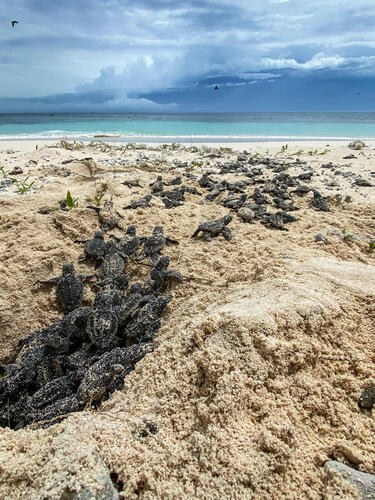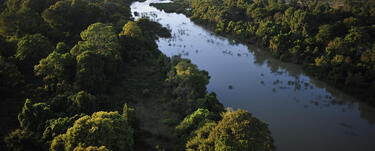Mission
World Wildlife Fund (WWF) works to sustain the natural world for the benefit of people and wildlife. Operating in nearly 100 countries, WWF collaborates with local communities to conserve natural resources, transform markets and policies towards sustainability, tackle climate change threats, and protect and restore wildlife and habitats. Together with partners at all levels, WWF builds a future where both people and nature thrive.
Basic Information
Tax-Exempt
Founded in
1961
EIN
52-1693387
Total Assets
$755.4 million
UN Sustainable Development Goals Supported
This organization contributes to the following United Nations Sustainable Development Goals. See the SDG page for more information.
Showing 3 of 3 goals
At a Glance

Saving sea turtles
WWF's new global database helps trace sea turtle origins for better protection strategies. This initiative facilitates the safeguarding of sea turtle habitats and ensures their longevity in the face of environmental threats.

Community-based conservation
WWF collaborates with community members in coastal Yucatán, Mexico, showcasing how local leadership can drive sustainable conservation efforts. This project highlights the importance of community stewardship in preserving nature.

River connectivity matters
WWF's Connected Rivers of Resilience initiative aims to protect free-flowing rivers that are under threat. By maintaining river connectivity, WWF ensures the survival of various ecosystems and the species dependent on them.
Impact Stats
350
Cities & Counties Engaged
Reducing Global Emissions
WWF is a key player in 'America is All In', a coalition aimed at reducing emissions by 50% by 2030. This initiative involves over 350 cities and counties working together to address climate change and promote sustainability.
1.3 million
US Members
Global Conservation Efforts
WWF engages over 1.3 million members in the U.S. alone to support various conservation efforts, making substantial strides towards protecting wildlife and conserving natural resources worldwide.
Impact Reports
MIP Score (Beta)
The MIP Score is in beta! We'd love any feedback you may have.
The MIP Score and it's methodology is purely used as a way to visualize how a nonprofits public financial data compares against others. It doesn't reflect the unique circumstances and impact that a nonprofit has.The MIP Score should never be used to say one charity is better than another.
Overall Score
75
66
/100
Program Expense Ratio
80.35%
12
/20
Program Revenue Growth
0.30%
4
/20
Leverage Ratio
0.1752
16
/20
Working Capital Ratio
1.766
14
/20
Fundraising Efficiency
0.002721
20
/20
Latest Filing Data: Form 990
Fiscal Year:2022
Source:Source: Self-reported by organization
Financial Details
Revenue
| Category | Amount | Percentage |
|---|---|---|
| Contributions, Gifts, and Grants | 355.2M | 95.27% |
| Program Services | 3.876M | 1.04% |
| Investment Income | 10.67M | 2.86% |
| Sales of Non-Inventory Assets | -993K | -0.27% |
| Other Notable Sources | 310.9K | 0.08% |
| Total Revenue | 372.8M | 100.00% |
Related Nonprofits
Friends of Jug Bay Wetlands Sanctuary Inc.
Environment
Natural Resource ConservationLeesville Lake Association
Environment
Natural Resource ConservationPine Strawberry Fuel Reduction Inc.
Environment
Natural Resource ConservationNational Bobwhite and Grassland Initiative Foundation
Environment
Natural Resource ConservationKeep the Tennessee River Beautiful
Environment
Natural Resource Conservation